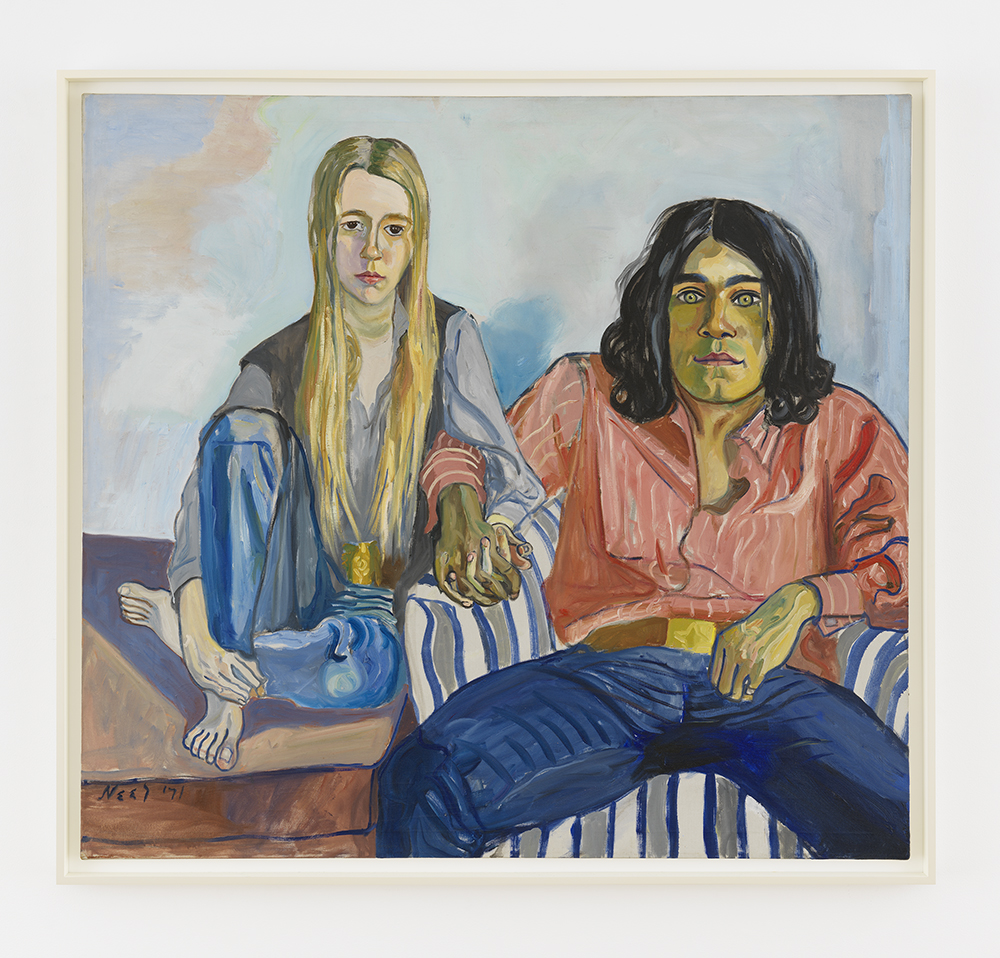
09 Jul Alice Neel: Feels Like Home at the Orange County Museum of Art
By Liz Goldner
Kudos to OCMA for mounting an exhibition of Alice Neel’s artwork. The painter has been described by art critic Roberta Smith as, “equal if not superior to artists like Lucian Freud and Francis Bacon and destined for icon status on the order of Vincent van Gogh and David Hockney.”
Residing most of her life in New York City, Neel (1900-1984), a feminist and bohemian, painted and socialized with people of color, gays, radicals, civil rights and political leaders, Warhol superstars, musicians, artists, women and children – her own and those she lived among. She depicted in paint these individuals in New York locales, including Greenwich Village, the Upper West Side and Spanish Harlem, providing a visual chronicle of the City’s progressive movements during the 20th century.
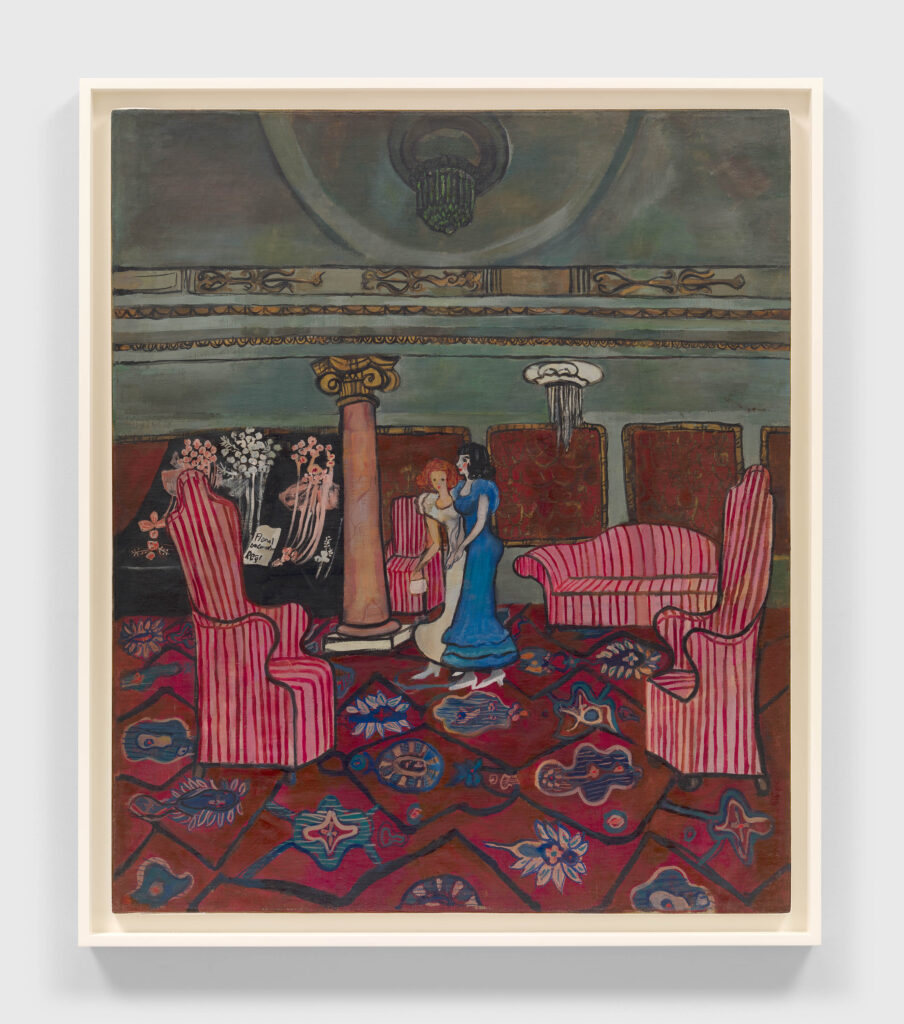
Movie Lobby, 1932
Oil on canvas
36 x 30 ¼ in (91.4 x 76.9 cm)
© The Estate of Alice Neel
Courtesy The Estate of Alice Neel and David Zwirner
Neel embraced in her work people of all ages, including her mother, her deceased father lying in his coffin (“Dead Father,”1946), her two sons, daughter-in-law and grandchildren. Her empathetic paintings became her lifeline and salvation from her early travails. These difficulties included periodic poverty, rejections by male partners, the tragic loss of two children, nervous breakdowns, resulting in stays at four psychiatric clinics, and rampant sexism before the advent of feminism.
Early in her career, Neel looked beyond the Impressionist painting style, favoring the Ashcan School of social realism as inspiration for her work. When the Abstract Expressionist, Pop and Minimalist schools of art became popular decades later, she continued to assert the importance of her hyper-realistic portraits. In fact, when these modern art movements were emerging, she was creating her most iconic paintings, including several in-your-face Warhol superstars and other defiant counterculture characters.
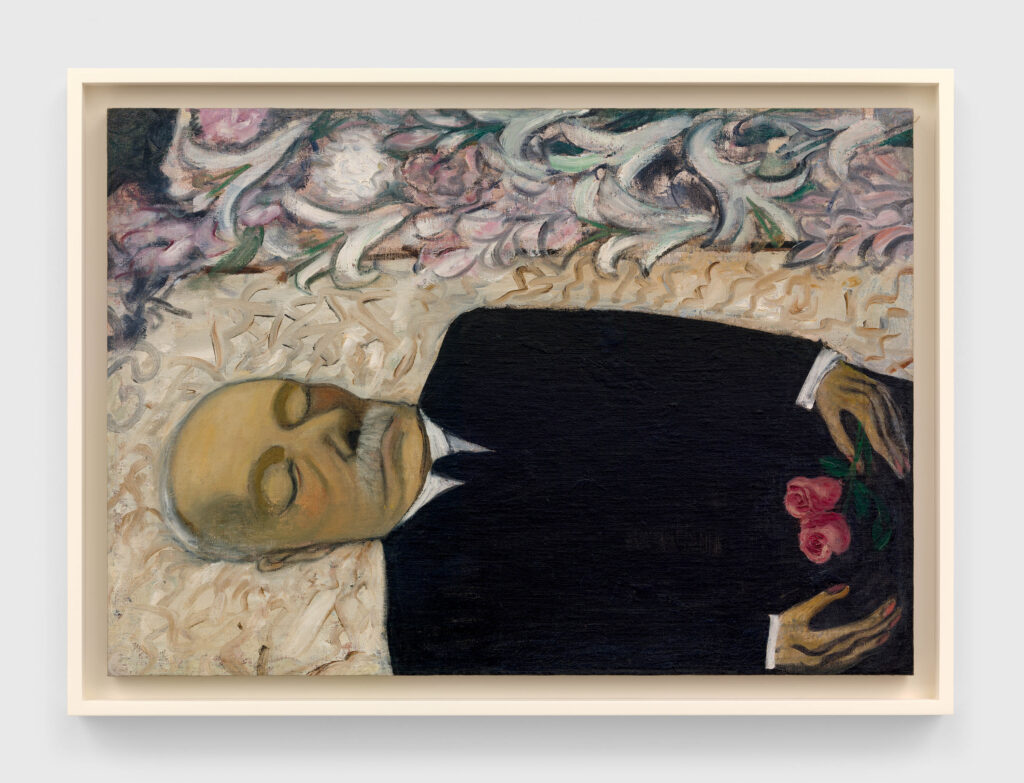
Oil on canvas
19 ¾ x 28 1/8 in (50.2 x 71. 4 cm)
© The Estate of Alice Neel
Courtesy The Estate of Alice Neel and David Zwirner
Smith wrote about her work in “The New York Times,” “In their depictions of individual beings, Neel’s images go beyond painting in her figures’ psychic honesty; they press out at us, like an unusually tactile version of photography. They have, as one writer put it, ‘an overkill of likeness,’ reminiscent of visceral avidity of the photographs of Richard Avedon and Diane Arbus.”

Ian and Mary, 1971
Oil on canvas
46 x 50 in (116.8 x 127 cm)
Private collection
© The Estate of Alice Neel
Image courtesy of The Estate of Alice Neel and David Zwirner
Neel achieved this incredible “likeness” by talking with her subjects before painting them, and waiting until the moment in which “they unconsciously assume their most characteristic pose,” she said, a pose that “involves all their character and social standing—what the world has done to them and their retaliation.” She enhanced her subjects with bold outlines, expressive brushwork and intense colors.
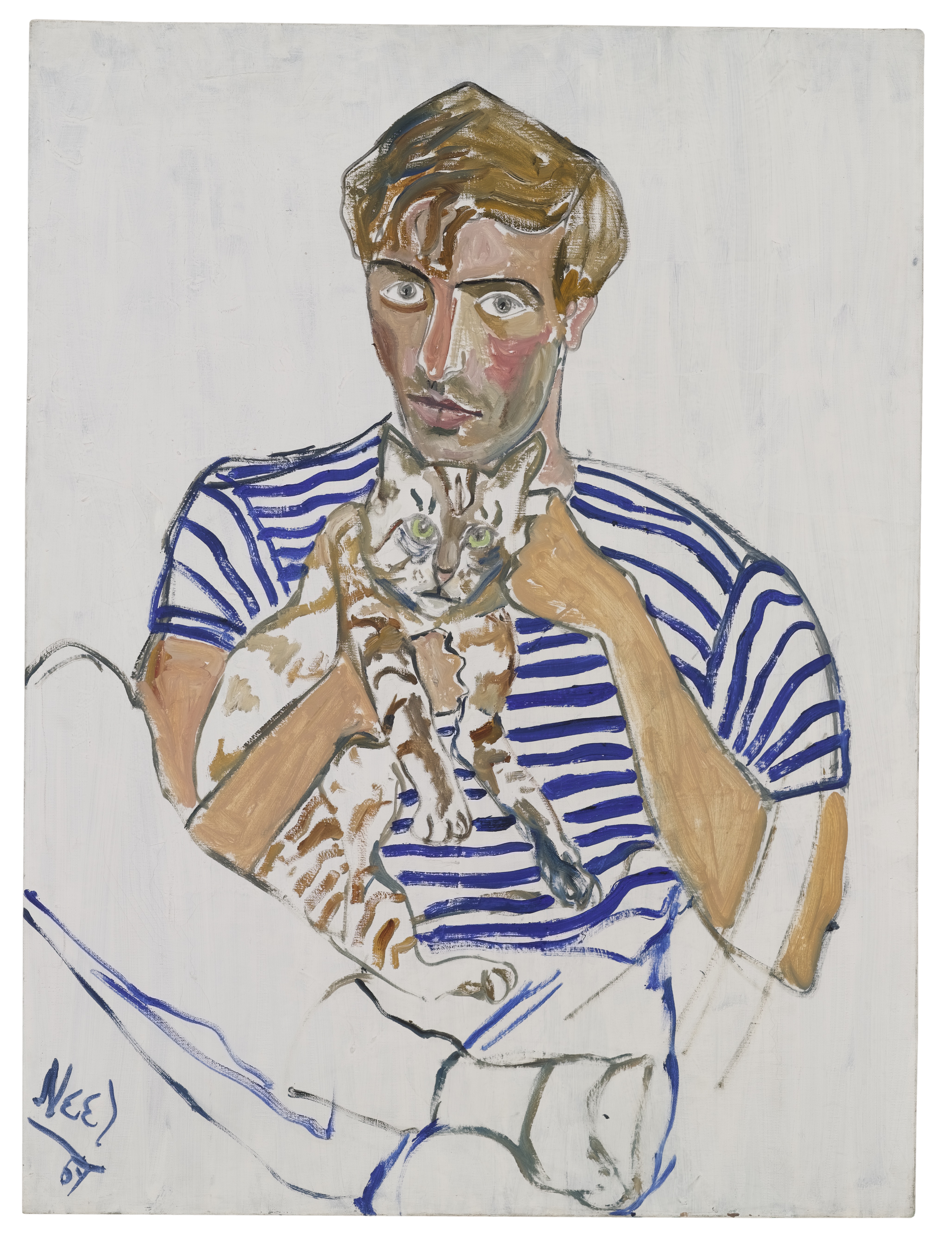
Hartley with Cat, 1969
Oil on canvas
40 x 30 in (101.6 x 76.2 cm)
© The Estate of Alice Neel
Courtesy The Estate of Alice Neel and Victoria Miro
Yet Neel was considered a marginal artist until 1974 when she was afforded a survey at the Whitney Museum of American Art. In 2021, the long-deceased artist was given her largest ever retrospective, “Alice Neel: People Come First,” of more than 100 works, at the Metropolitan Museum of Art. The exhibition traveled to San Francisco’s de Young Museum in 2022. Both shows featured nudes, including pregnant women, men, and even Neel at an advanced age, all reflecting the artist’s penchant to follow her own course.
This year’s OCMA retrospective, “Alice Neel: Feels Like Home,” follows these blockbuster shows with more than 40 paintings, many revealing her magnanimous passions and involvements in 20th century counterculture.
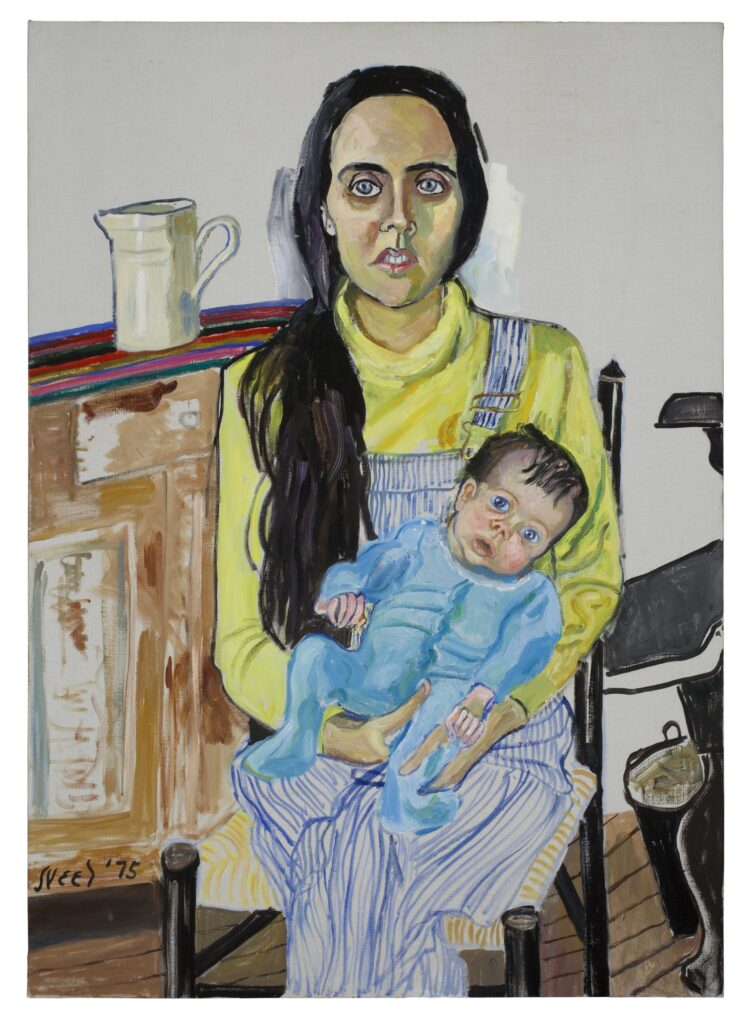
Ginny and Elizabeth, 1975
Oil on canvas
42 x 30 in (106.7 x 76.2 cm)
© The Estate of Alice Neel
Courtesy The Estate of Alice Neel and David Zwirner
Neel’s works are so vibrant — painterly and emotionally — that the people in her portraits seem to emerge from the canvasses. She channeled the several decades when our world was shucking off its formality to evolve into free expression in dress, attitudes and behavior. “Ian and Mary” (1971), for example, portrays a reportedly interracial couple, striking a casual, hippie-like pose, with arms and fingers knotted at the picture’s center. “The Family” (1938), is one of few paintings in this show depicting a family of color (although she painted numerous portraits of people of color). In this painting, the family consists of a Latino mother and daughter, looking forlornly into the distance, possibly foretelling of the difficult lives they might lead.
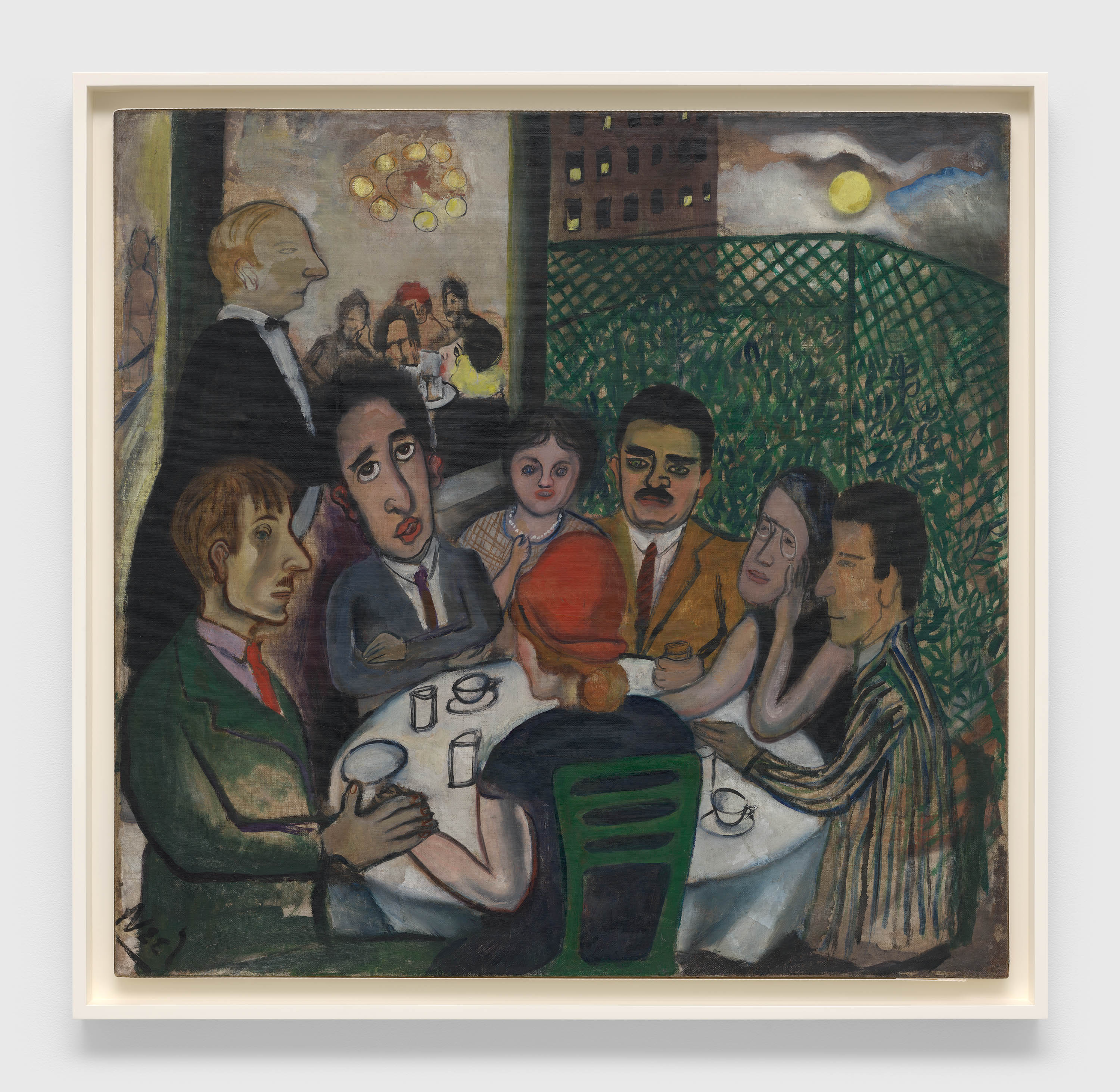
Village Party, 1933
Oil on canvas
30 1/2 x 32 in (77.5 x 81.3 cm)
Private collection
© The Estate of Alice Neel
Image courtesy of The Estate of Alice Neel and David Zwirner
“The Fugs” (1966) is an exuberant look at the three-member rock band, formed in New York in the sixties. That they were often controversial, making negative comments about the war in Vietnam and burning a flag onstage, reveals Neel’s inclusion of all kinds of people in her work.
On the home front, several paintings of daughter-in-law Ginny express Neel’s love for her family. “Ginny and the Parrot” (1970), in fauve colors with bold lines, depicts the intense young woman, talking to her parrot. “Ginny and Elizabeth” (1975) portrays the woman holding her infant, seated in a wooden chair. In this Madonna and Child pose, both mother and baby have large eyes staring at the artist (and viewer).
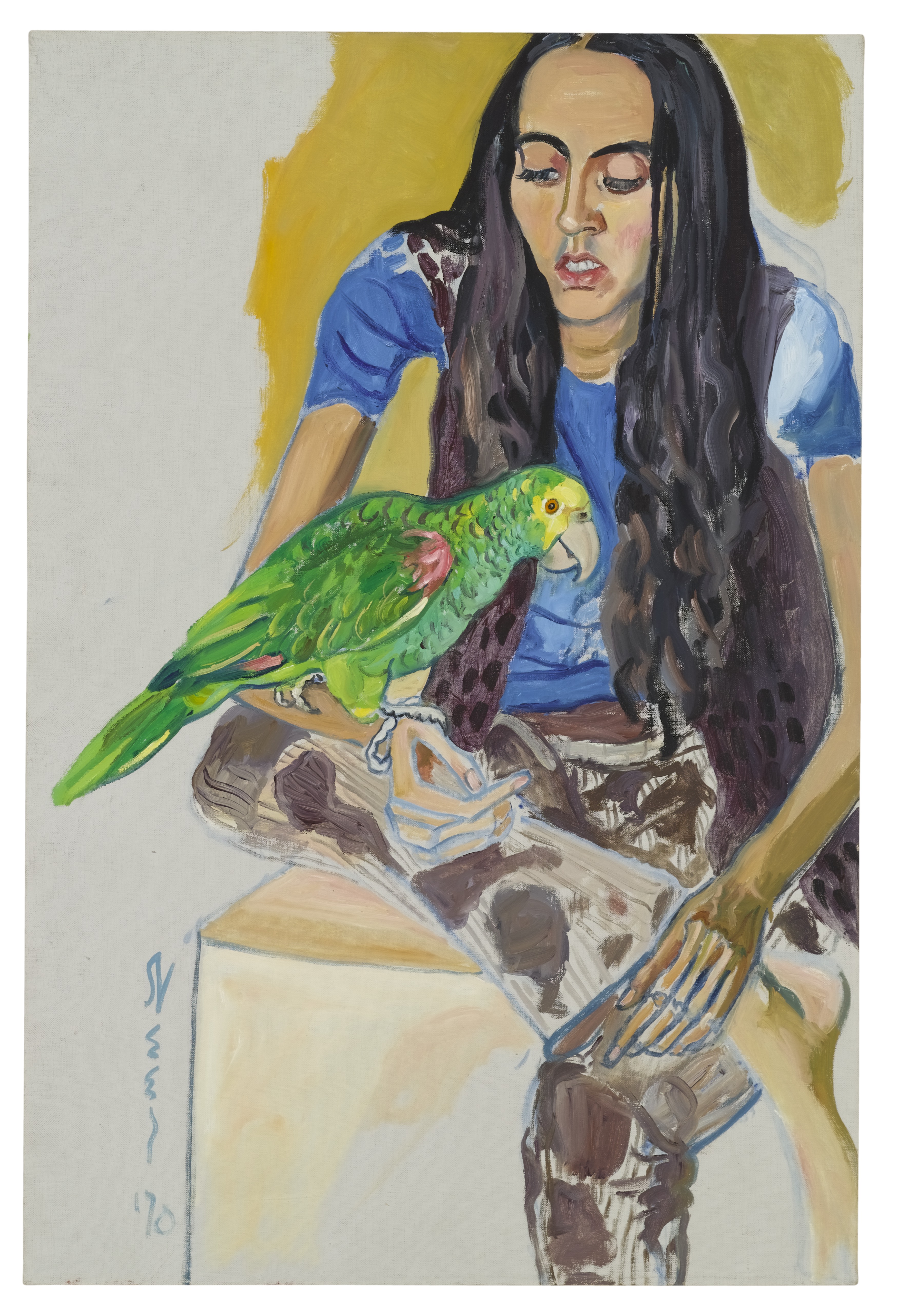
Ginny and the Parrot, 1970
Oil on canvas
36 x 24 in (91.4 x 61 cm)
© The Estate of Alice Neel
Courtesy The Estate of Alice Neel and David Zwirner
“Sam and Hartley” (1945) is one of several paintings featuring Neel’s son, Hartley. In this picture, the boy is nestled against a man, presumably his father. “Hartley With a Cat” (1969) shows the 20-something boy snuggling with his cat, looking downward, probably trying to avoid his artist mother. “Hartley and Andrew” (1978) portrays the beret-wearing father holding his son. As with so many Neel portraits, both sitters have large eyes staring at the world, and at us.
The many treasures in this exhibition also comprise the luxurious “Movie Lobby (1932),” “The Cafeteria” (1938) featuring a destitute old woman, New York scenes including “Fish Market” (1947) and “Sunset, Riverside Drive” (1957) and commissioned paintings of prosperous families. Yet it is Neel’s spirit of expressing gratitude for the many people she knew and loved that shine through this exhibition.



Sorry, the comment form is closed at this time.